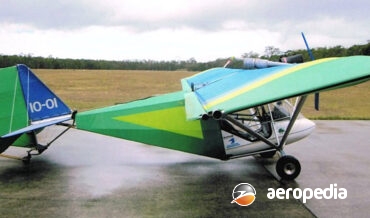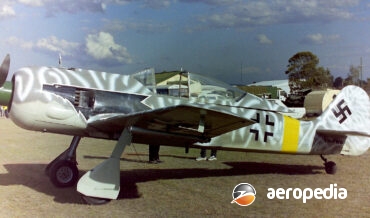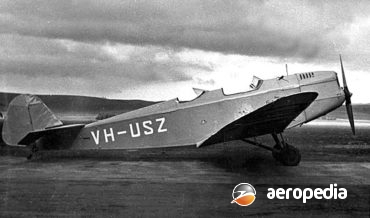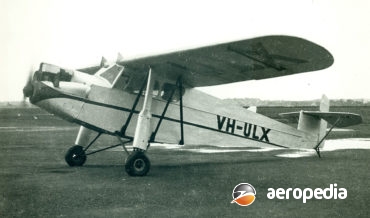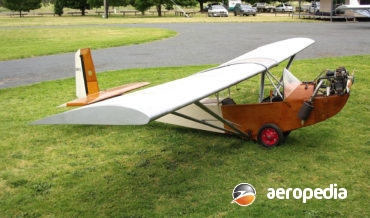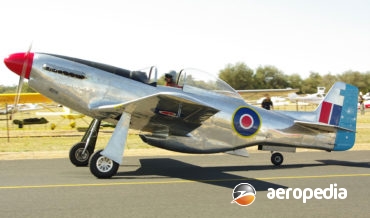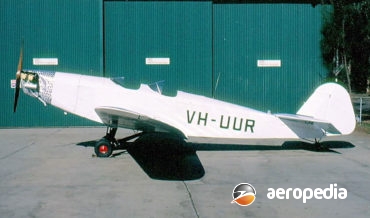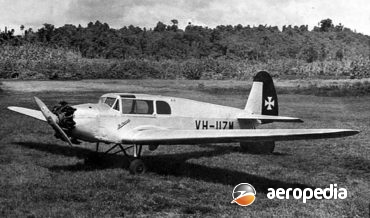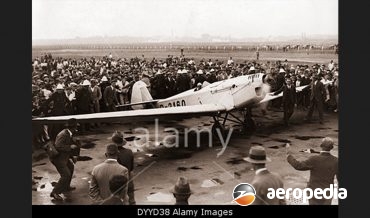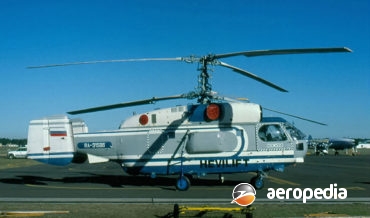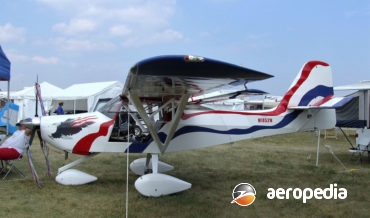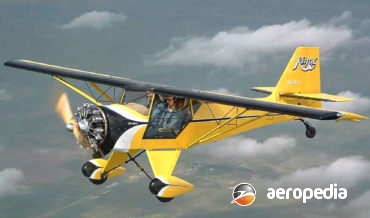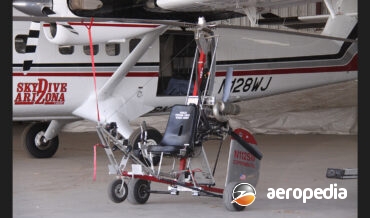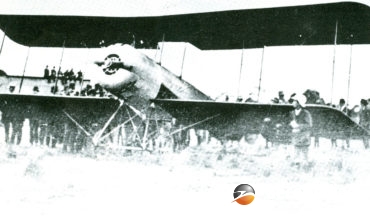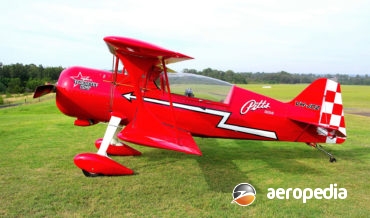All Contents
Contents
This aircraft was designed and built by the late Joseph Kostecv and it was powered by a 21-kw (28-hp) Konig four-cylinder radial engine.
David C. Eyre
- May 25, 2020
This was a further light aircraft designed and built by the late Joseph Kostecv, this being a 75% scale Piper J-2 powered by a Konig engine.
David C. Eyre
- May 25, 2020
This aircraft was a homebuilt light aircraft built in a terrace house at Redfern in Sydney before World War II. A press report in the Daily Telegraph from April 1910 described it as the “First Australian-Built Aeroplane”.
David C. Eyre
- May 25, 2020
Following the announcement of Henry Kremer in the United Kingdom inviting interested parties to design and build an aircraft to make the first successful flight of a man powered aircraft.
David C. Eyre
- May 25, 2020
The Kermit was a single-seat ultra-light aircraft designed and built in Australia and made its first flight in 1999. It was fitted with a Rotax 503 engine driving a Sweetapple two-blade propeller.
David C. Eyre
- May 25, 2020
Terrence Kronk over the years, before his tragic loss in an aircraft crash, was involved in the construction of a number of scale replicas of aircraft, and these included a Spitfire Mk 26 , North American P-51 Mustang and a Fw-190A.
David C. Eyre
- May 25, 2020
Little is known about this aircraft other than it was designed and built by A G Kuhle. It seems to have been a one-off light aircraft powered by a Continental O-200 engine which was registered with the RAA as 28-3133 (c/n V.110).
David C. Eyre
- May 25, 2020
Mr Terrence Kronke was well known in aviation circles as the designer and builder of scale replicas of World War II aircraft, amongst his aircraft being a Supermarine Spitfire with a five-litre Chevrolet V-8 engine.
David C. Eyre
- May 25, 2020
Leichtflugzeugbau Klemm Gmbh of Boblingen, Wurtemberg, was the successor to the Daimler-Werke AG which first produced light aircraft in 1919.
David C. Eyre
- May 8, 2019
Kolb Aircraft in the United States produced a number of ultra-light aircraft designs. These include the Firefly with a 31-kw (42-hp) Rotax 447 engine; Kolbra with a 48-kw (65-hp) Rotax 582 and a STOL variant with a 60-kw (80-hp) Jabiru 2200 engine.
David C. Eyre
- May 8, 2019
The Firestar was produced by Kolb Aircraft in the United States in the 1980s as a single-seat ultra-light and had features of early models produced by the company but had the benefit of some years of development.
David C. Eyre
- May 8, 2019
For many years Holmer Kolb was involved in the design and construction of light aircraft of his own design and is considered one of the founders of the ultra-light movement in North America.
David C. Eyre
- May 8, 2019
In 1920 Frits Koolhoven returned to The Netherlands from the United Kingdom and became designer for the Nationale Vliegtuigindustie formed in The Hague and commenced designing a series of light aircraft.
David C. Eyre
- May 8, 2019
The Kostevc parasol aircraft was designed and built by Joseph Kostevc of Goonelaba, a small town near Lismore, NSW.
David C. Eyre
- May 8, 2019
This aircraft was an 80-percent scale custom-built replica of a North American P-51K Mustang and was designed and built by Mr Terrence Kronke in Queensland, although the wingspan was built to 72% scale. It is described as a P-51 Scale Mustang and was registered to the builder on 1 December
David C. Eyre
- May 8, 2019
The Klemm Kl 25 series of light, low-wing cantilever monoplanes with an open cockpit was the first aircraft manufactured by Leicht Flugzeugbau Klemm.
David C. Eyre
- May 8, 2019
In 1933 the Kl 31 was introduced to the Klemm range of light aircraft. It was a low-wing cantilever monoplane of typical Klemm construction, the wing having two spruce spars and plywood covering from the nose to the rear spar on both sides of the wing.
David C. Eyre
- May 8, 2019
The Klemm L-32 series was introduced to the Klemm range of light aircraft in 1933, being a three-seat light touring aircraft designed by Dr Ing Hans Klemm.
David C. Eyre
- May 8, 2019
The Klemm L 26 was one of a series of light aircraft produced at the conclusion of World War I.
David C. Eyre
- May 8, 2019
The K-Max was designed and built by Kaman Aerospace as an affordable, medium-lift helicopter able to perform vertical lifts and suited for emergency response missions ranging from fire-fighting and disaster relief to search and rescue, power line work, and timber harvesting. A variant developed was the Firemax, a heli-tanker model
David C. Eyre
- May 8, 2019
The Sky-Rider was an ultra-light aircraft designed by Gareth Kimberley in 1978, he at that time being employed by Qantas as a Boeing 747 Captain and had an interest in hang gliding.
David C. Eyre
- May 8, 2019
The Seasprite has had a remarkably long life in service with the US Navy, the contract for its design being issued in 1957. Since then it has been built in relatively small numbers, some 250 or so machines initially, but those built have been the subject of a considerable number
David C. Eyre
- May 8, 2019
In 1959 Bankstown, NSW based Kingsford Smith Aviation Service Pty Ltd set up a company, Austerserve Pty Ltd, to modify and improve Austers imported from the United Kingdom.
David C. Eyre
- May 8, 2019
The Ka-32 is the designation for the civil series of helicopters produced for the Soviet military forces under the designation Ka-25/27 and given the code names “Hormone” and “Helix”. Basically designed for anti-submarine warfare, the prototype appeared in 1981. Nikolai Ilytich Kamov was one of the lesser known Soviet designers
David C. Eyre
- May 8, 2019
The Kingsmith was a further effort by Kingsford Smith Aviation Service of Bankstown, NSW to modernize the Auster series of aircraft, in this case using an Auster J-1 Autocrat for the conversion.
David C. Eyre
- May 8, 2019
In 1934 the Imperial Japanese Navy issued specifications for a long-range flying boat, and Kawanishi appointed a design team headed by Shizuo Kikuttara. The prototype, the Kawanishi Type 97, powered by Nakajima Kikari 2 nine-cylinder radial engines, commenced flight testing on 14 July 1936. Some problems were experienced with hydrodynamics
David C. Eyre
- May 8, 2019
The KS-3 agricultural aircraft was the forerunner of the Yeoman Cropmaster, and was built at Bankstown, NSW, by Kingsford Smith Aviation Services in the 1950s.
David C. Eyre
- May 8, 2019
In August 1938 the Imperial Japanese Navy issued an order for a successor to be designed and built to replace the Navy Type 97 Flying Boat Model I, this requiring a cruising range of 7,410 km (4,604 miles), a heavy armament, and the ability to carry two 1,000 kg (2,204
David C. Eyre
- May 8, 2019
In 1954 the need was seen by Kingsford Smith Aviation Services Pty Ltd of Bankstow, NSW for a large, high powered, agricultural aircraft of simple construction to replace the de Havilland Tiger Moth then in widespread use.
David C. Eyre
- May 8, 2019
The Kawasaki Ki-45 Toryu (Dragon Killer) – known to the allies as Nick – was an important part of the Japanese Armys fighter fleet in the Pacific and saw service through the War in a number of roles. In December 1937 Kawasaki initiated design of the Ki-45, a two-seat fighter
David C. Eyre
- May 8, 2019
This aircraft stemmed in 1998 from a series of light aircraft designed by Dan Denney. The Lite was an ultralight trainer aimed as the US Sports Pilot Program. It has been produced in kit form and is available in tricycle undercarriage configuration.
David C. Eyre
- May 8, 2019
In 1937 the Japanese Army sought an aircraft manufacturer to provide a design for a high-performance twin-engine light bomber with a crew of four, and Kawasaki Kokuki Kogyo K with a team lead by Takeo Doi, provided a design for a cantilever mid-wing monoplane powered initially by two 709-kw (950-hp)
David C. Eyre
- May 8, 2019
Daniel Denney of Denny Aerocraft over the years has developed a number of light aircraft for recreational use, most able to be fitted with a tailwheel, tricycle undercarriage, and may be fitted with skis or floats.
David C. Eyre
- May 8, 2019
In February 1940 Kawasaki Kokuki Kogyo KK was asked to design a fighter around the licence built Daimler-Benz DB 601A twelve-cylinder VEE engine, and to this end the Ki-60 evolved, the prototype flying in March 1941. Initial trials were not particularly successful, and the aircraft was redesigned as the Ki.61
David C. Eyre
- May 8, 2019
The Kawasaki KV-107 was a licence-built version of the Boeing Vertol Model 107 which had been supplied to the US and other military forces as the H-46 Sea Knight and which had been produced in a variety of models to meet a number of operational needs. In 1965 Kawasaki acquired
David C. Eyre
- May 8, 2019
Developed from the Minicab GY-201, which was designed by Yves Gardan in France, the Cavalier is a redesign of that aircraft, which was also aimed at the amateur construction market.
David C. Eyre
- May 8, 2019
Ken Brock Manufacturing Inc of Stanton, California since 1957 has been building a series of single-seat open frame gyroplanes, models including the KB-2 and KB-3. Similar in appearance to the Bensen series, which first became available in 1953, a number of refinements were made to that design including a modified
David C. Eyre
- May 8, 2019
In 1914 the Kalgoorlie Aeroplane Syndicate was formed with the aim of building a two-seat biplane fitted with a 37-kw (50-hp) Gnome rotary engine. Chief constructor of the machine was Mr A E Geere, who served his apprenticeship with VICkers Aircraft Co in the UK. He had obtained pilot’s licence
David C. Eyre
- May 8, 2019
The Homebuilt 12 is a development by Jim Kimball Enterprises Inc of Zellwood, Florida to make the Pitts S-2 Special series into a more powerful aircraft for unlimited aerobatics to compete against other types of aircraft in this category.
David C. Eyre
- May 8, 2019
Recent Comments
Archives
Categories
- No categories
Categories
- No categories
Latest Posts
Newsletter


